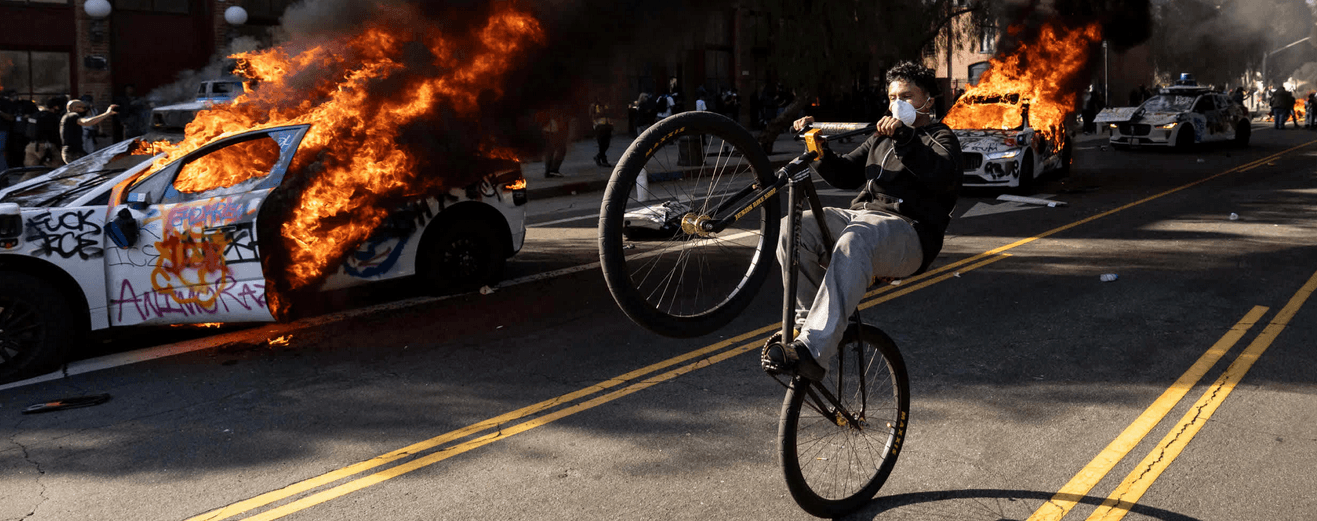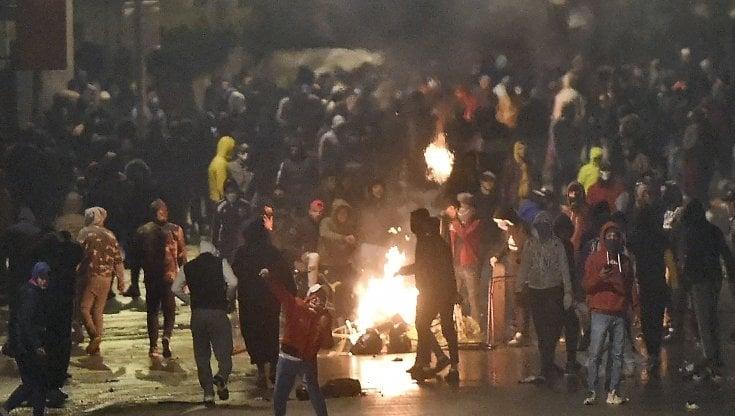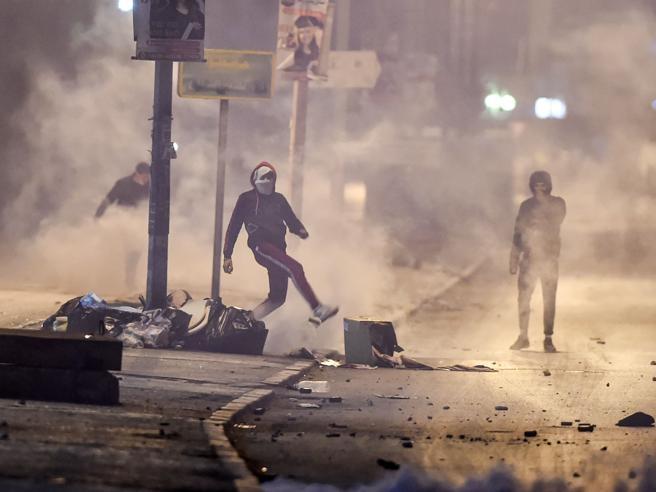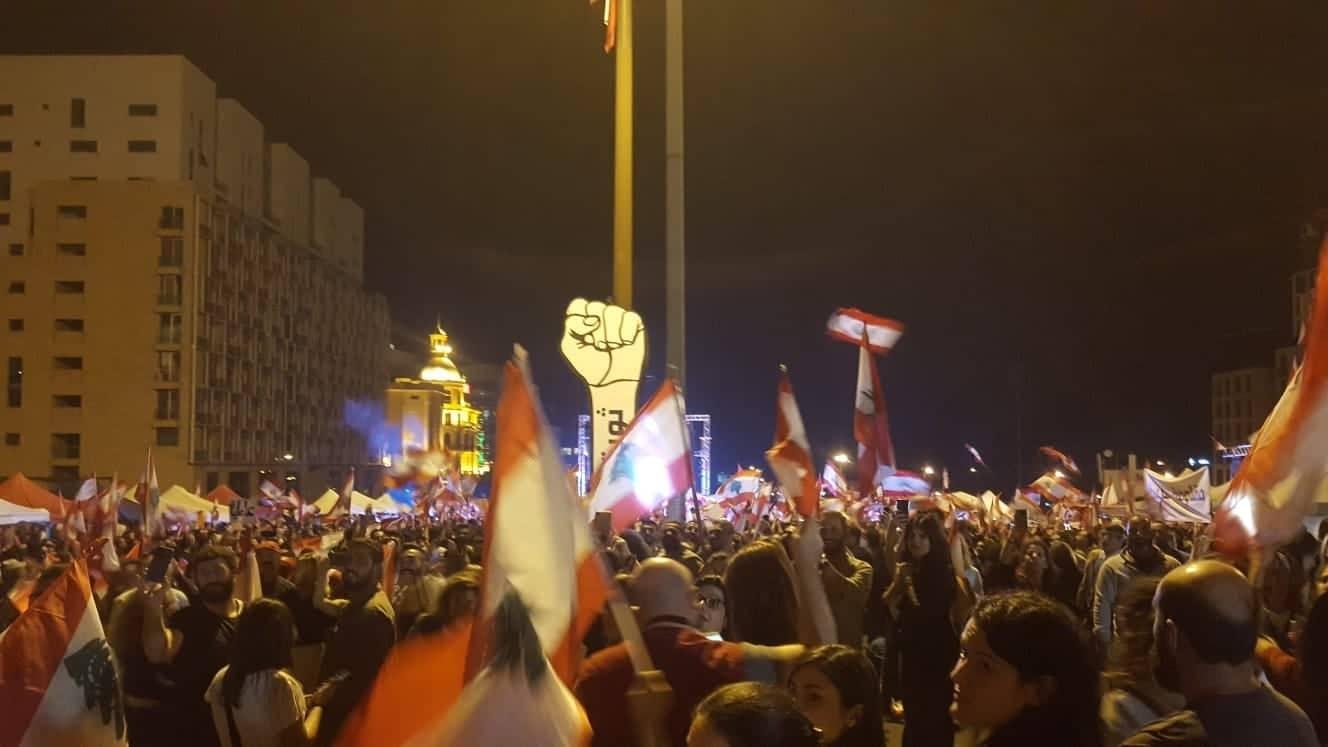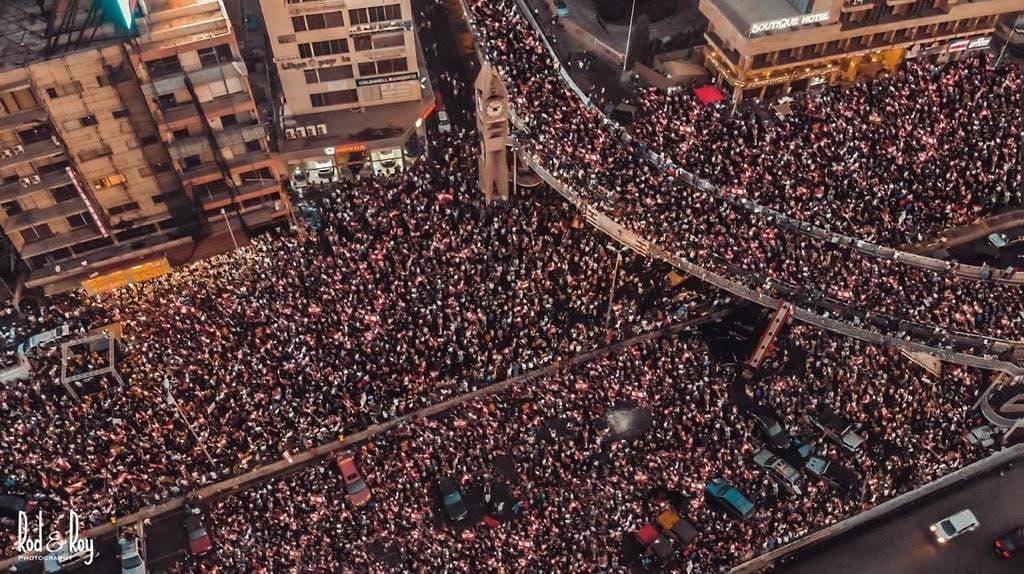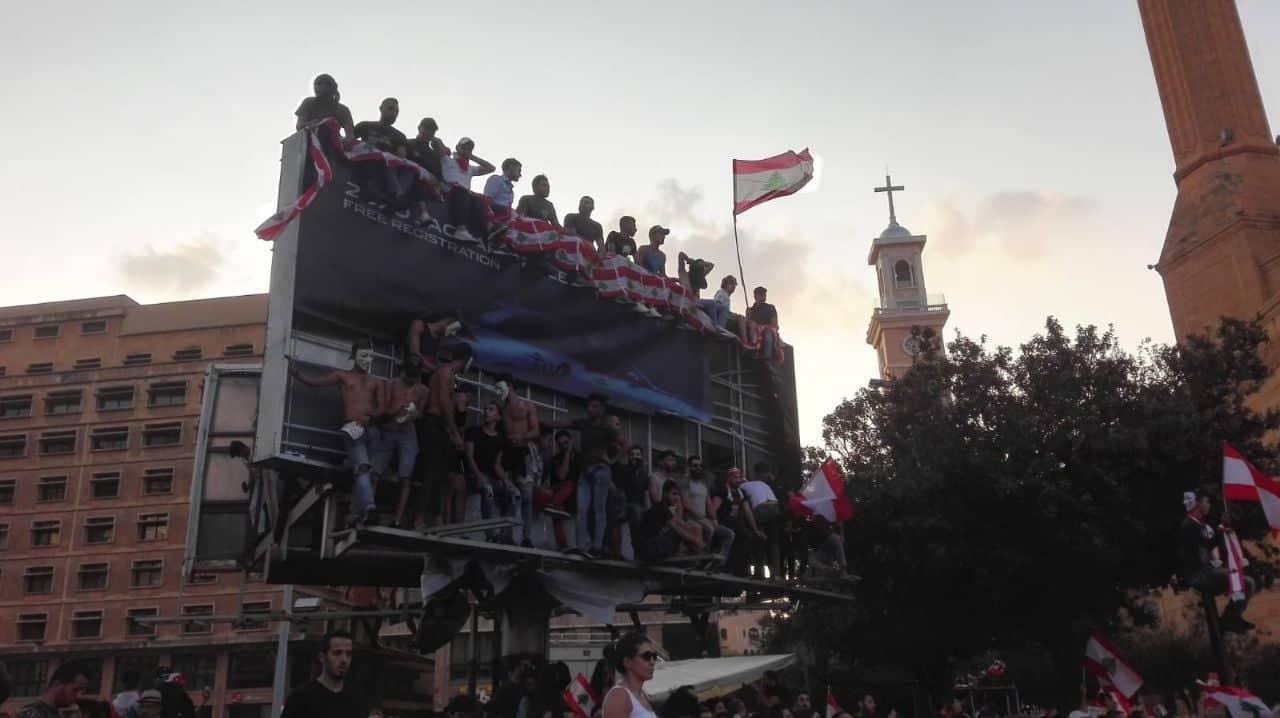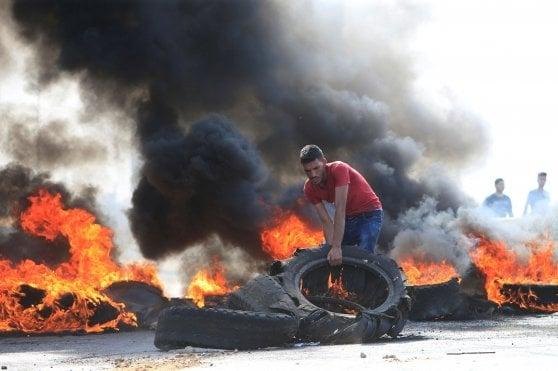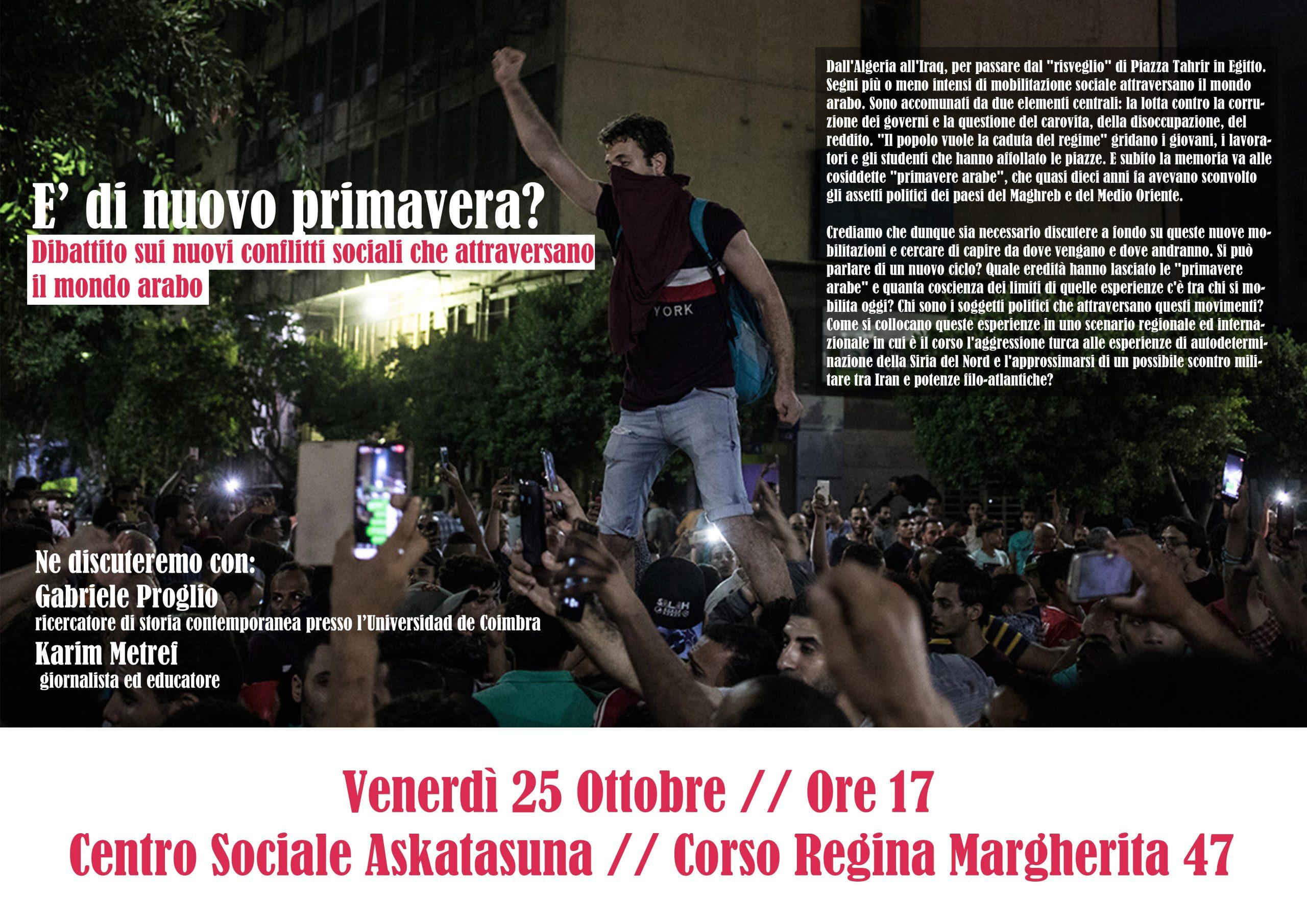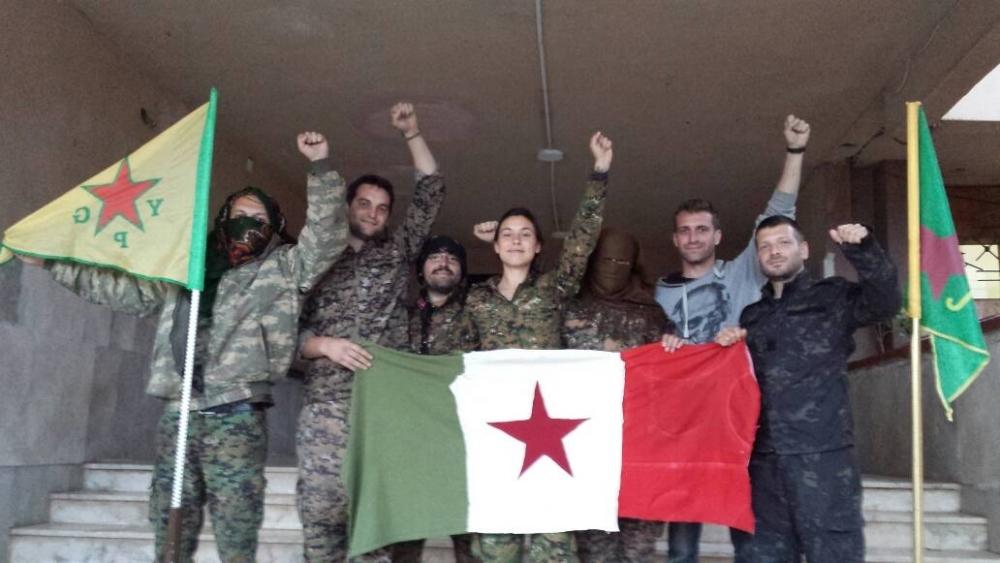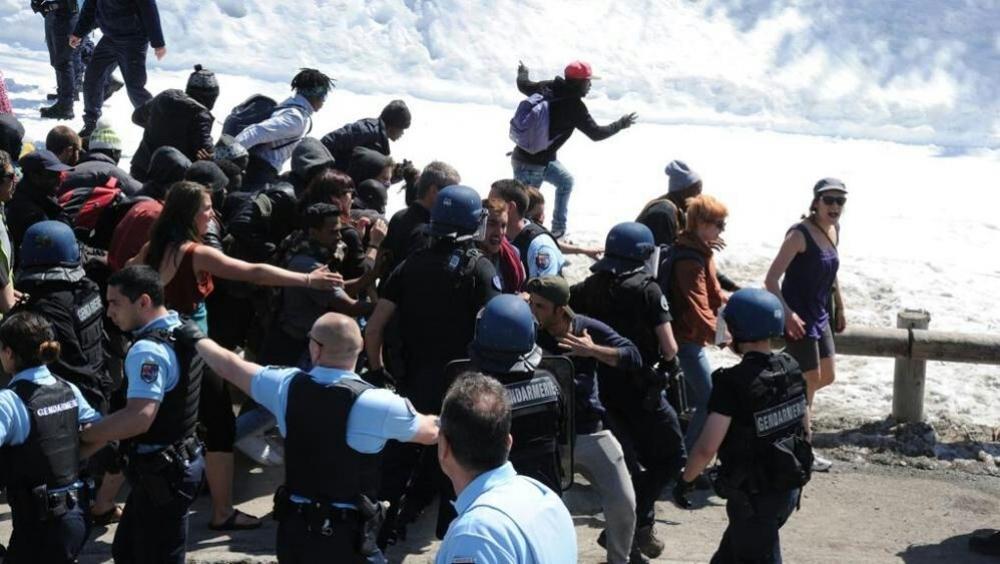The Journey of Protests in the Mediterranean and Beyond
Interview originally published and introduced on Jadaliyya.com here
Paola Rivetti (PR): You recount the Tunisian revolution from an unusual point of view. Your book is in fact a book for political practice. It offers a sort of “aesthetic of action” rather than focusing on analysis. What was your goal in adopting such a perspective? Talking about political action, do you remember any moment as particularly meaningful and inspiring?
Fulvio Massarelli (FM): The Rage of the Casbah is above all a tool of communication between the two shores of Mediterranean. In particular, I interviewed some of the key players of the revolutionary process in Tunisia who, among other things, commented on the anti-austerity movements in Italy and offered to the Italian movements some useful tools for reciprocity and action. The point of observation I adopted in the book does not stem so much from political action. I would rather say that it stems from struggles. My attention was focused on the social and political composition of the revolutionary masses, and on its antagonist forms of expression. This is relevant because mainstream media have been using a narrative about the Tunisian uprising aimed to disembody the revolutionary process from its materiality, its corporeity. In Italy, for instance, they came up with notions suited for the European audience, such trash as the “Facebook revolution” or, even worse, “the jasmine revolution.” My focus on antagonism and on the social composition of the revolutionary movement was therefore not only a method of research, but also an occasion to question this mainstream narrative. I also reflected on the potential influence of the North African mobilizations on the northern shore of the Mediterranean, and the political tendency that permeated the Tunisian square as determined by its social composition. This was by no means different from the social composition of the poverties in Europe. I remember the occupation of the Casbah, the physical core of power in Tunis, and the exceptional mass re-appropriation of the public space where diverse struggles were present. I remember the slogan “dégage,” which recalled the slogan “they all must go” of the Italian student movements struggling against the education reform implemented by the Berlusconi government in 2008-2010. By appropriating Ben Ali’s loci of power—the loci of social cohesion imposed by Ben Ali’s police state and the Casbah square, overlooked by the presidential palaces—the people experimented with the construction of a counter-institutionality and alter-institutionality. That has been the greatest challenge to the “regimes of poverty and austerity.” It was not a coincidence that such practices were later adopted and implemented elsewhere in other contexts.
PR: In your book, you underline the relevance of the workers’ participation and contribution to the uprisings. The miners’ strikes in Gafsa have played an important role in proving that political action was possible. Later, the alliance between the workers and the urban youth was been fatal to the dictator. Could you elaborate on the composition of the revolutionary mass, the goal of the uprisings as well as their origins? What was the role of the workers’ organizations? What did the protagonists you met and interviewed tell you about that?
FM: The revolutionary process in Tunisia, which began with the self-immolation of Mohamed Bouazizi, had a young and educated proletariat at its forefront. This social group was able to turn “the knowledge of the school, of the street, and the stadium” into a useful tool for revolution. Trade unions’ headquarters, the stadium terraces, and social networks were used as spaces for organizing early revolts. These three spaces became the meeting point of the “workers of the arm and brain.” Day by day, as the revolt spread all over Tunisia and reached the coastal regions too, the social composition of the movement was enriched by the poor and by different political and cultural opposition groups. At that time, the targets of the uprising were the symbols of the regime and its project of social cohesion engineering: police headquarters and stations; some companies viewed as symbols of patronages; and the governorates. Yet, the genealogy of such a diversified movement has to be traced back to the workers’ struggles in Gafsa and more broadly to the great Tunisian mining basin. The revolutionary potential of this struggle was until 2010 often neglected. The miners’ revolts in 2008 and the revolutionary process in 2011 evidence that the means employed by Ben Ali’s regime to save social cohesion, such as local patronage networks or the bargaining game between the UGTT secretariat and the regime, were not sufficient to mediate and resolve the conflicts. Such incapacity is also present today, as the crisis and the recent restructurings of production have broken down the function of mediation that trade unions and the new system of parties should carry out. This is evidenced by the fact that the population continues calling for a “dégagement.” Trade unions and the UGTT have been instrumental in boosting the revolutionary process, but it is quite clear that today they are not a tool of social cohesion.
PR: You explicitly talk about a “Tunisian revolutionary proletariat,” whereas Lorenzo Fe and Mohamed Hossny stress the role of the middle-class urban youth. Do you think that the two revolutionary masses were to some extent different in terms of composition?
FM: As for as the composition of social movements is concerned, I am interested in what I would call the downward compression that breaks or at least makes problematic the category of middle class. Or, better, it shows the inherent political nature of the definition of “middle class.” It seems to me that in these last years, social movements all around the world have shown the ambivalence of such a notion, highlighting its political value, which is today in crisis. This is what we have seen in Tunisia and in Egypt, but elsewhere too. The youth is violently kicked out of the middle class which, above all, is a political space of consistence with a project of modernity now completely in crisis. There is no new deal on the horizon, and there is no project of social cohesion not resting on the increasing expulsion of generations of men and women from social wealth guaranteed—until recently—by the welfare state, especially when it comes to health and education. Today, the sons of the crisis are determined to resolve this dynamic by re-appropriating the tools of politics in an antagonist and collective fashion. That is why I prefer to talk about a revolutionary proletariat. The social movements against the “regimes of crisis and poverty” in the Mediterranean are reversing such a downward compression of the middle class, and are strengthening the dynamics of upward pressure against poverty. Thus, a new proletarian youth has burst into the capitalist crisis and is strong enough to open up a welcoming space for the diversified anti-poverty struggles. As for the anti-poverty and anti-austerity movements, I can find some continuity not only between Tunisia and Egypt, but also among other Mediterranean countries and beyond.
PR: Your “voices from the revolution” stress the anti-neoliberal character of the protests and their claim for a more fair and just society. Considering the electoral victory of the Islamists, who do not plan for any radical measure of wealth redistribution, do you think that the anti-neoliberal nature of the protests is still there?
FM: Among the many political and cultural merits of the insurrections in Tunisia, I think the disruption of the dispositifs of the endless war and of the so-called “clash of civilizations” has to be included. Indeed, the notion of “clash of civilizations” is seriously hit and replaced by the “clash in the civilization” of capitalism in crisis, according to which the issue of wealth redistribution and the struggle against neoliberalism make their way as political hypothesis of peace and for peace. In Sidi Bouzid and everywhere else in Tunisia, “dégage” was not simply aimed against Ben Ali himself. Rather, as the protagonists of the movement explained to me, it was aimed against the whole system, deemed as corrupt, and against a neoliberal model of development. Thus, those narrations turning the uprisings in Tunisia into pro-liberal ones, or into movements hegemonized by the Islamist framework, represent an effort to redeploy and whitewash the conflict, which is not between Islam and the West anymore, but between the exploited, bombed, rejected, and the poor on the one side, and the exploiters on the other side—the so-called one percent that rules the world and makes big profits at the expense of the others. The Islamist victory in the Tunisian elections is a political reaction the regime implemented to restructure that developmental model challenged by the square–whose institutions were thrown into crisis and still are, thanks to social mobilization. According to me, we are talking about a fragile Thermidor, pressured by the claim for wealth redistribution and by the inflexible assertion that the time of dignity has finally come.
PR: Some scholars have talked about “unfinished revolutions” in the case of the North African uprisings. You also seem to suggest the same. You open the book by recounting the efforts for establishing a “third casbah” and describing the resilient popular dissatisfaction with the electoral process and current government. Your perspective on the events does not only unveil the unfinished nature of the revolutions, but also stresses the centrality of the people’s requests in establishing political possibilities. This reminds me of Michael Hardt and Toni Negri’s idea of the constituent power of the multitude/people/mass. What are the theoretical perspectives or the practical experiences informing your views on the events?
FM: Surely we are dealing with an unfulfilled revolutionary process! I like to recall some graffiti I read on the wall of the Casbah of Tunis: “This is just the beginning!” and “We will never turn back!” To understand the meaning of these slogans, we must perform a methodological operation alike the one carried out by the Parisian insurgents during the Paris Commune. When the Commune was proclaimed, they shot the clocks, politically declaring the end of the time of exploitation, humiliations and abuses of the capitalist system. We have to appropriate an autonomous temporality and spatiality defined by the struggles themselves, their local rhythms. Those who want to declare “the end” are not the revolutionary subjectivities usually, but their counterpart. How hastily, after the elections of the Tunisian constituent assembly, the conclusion of the revolutionary process was declared by all sides! The actual facts tell us the opposite, and the insurgencies shaking Tunisia demonstrate the fragility of the Islamist Thermidor. After all, what a nice paradox the strategy “of the democratic transition” has to offer: as the crisis of representation shakes the statute of sovereignty in Europe, there is an effort to impose liberal-democratic regimes in Northern Africa through moderate Islamism–which is considered, according to the precepts of the Western tradition, to be experiencing an ongoing secularization. From this point of view we cannot but notice the contradiction between the material constituent process coming from below and the National Constituent Assembly. The latter seems to stand out as a reactionary force against the political, social and cultural needs expressed by the former. As for the method I used to do research, I employed the co-research methodology, as elaborated by the Italian operaismo and systematized for the first time in Italy by Romano Alquati. It allowed me to move between social inquiry and political participation. Thus, the book was about putting in literary form blooming political and social tendencies. At the core of my attention there is the emerging of an antagonist form of knowledge and the construction of counter-institutionality and autonomous institutions, ranging from the Tunis Casbah to previous experiences of people’s self-government, their durations and spatiality beyond the mere events.
PR: You underline the importance of the North African uprisings in inspiring the movements that have spread from Spain to London, Athens, New York. You recently published a book on The Strength of Syntagma Square about the Athens uprisings (AgenziaX, 2013). What are the similarities and differences among the squares you visited?
FM: Until 2011, new generations could only dream or read about revolution. Now, it entered in our lives. Traveling through Tunisia, Spain, Greece, Slovenia doing co-research, I could observe and participate in the rise of these movements which, after breaking out in the Mediterranean area, have reached the Atlantic shores and the Pacific gulfs. Although there are superficial differences, it is remarkable to note how the practices of the struggles and the knowledge springing off from them move between countries. This is the case for the re-appropriation of public space against the loneliness of neoliberalism or against the symbolic boundaries and fear produced by police states. This is also the case of the rejection of the institutional expressions of the one percent: “dégage”, “que se lixe”, “irhal”, “que se vayan todos”, “gotof si.” And finally, this is the case for a common effort in establishing alternative forms of social organization beyond the state. From this point of view, we can talk about a constituent process, a sort of “koiné dialektos” emerging from the struggles of the precarious workers, the unemployed and the poor from all over the world. However, this is not a linear process with a univocal direction; on the contrary, this process is full of sticking points and deadlocks. I think that the real challenge the global movements have to engage is the composition of the constituent process with the destituent energy. In a few words, the “koiné dialektos” has to learn a new language in movement, which is able to mirror the requests of the insurgencies against neoliberalism along with the alternative and autonomous institutions they establish.
PR: An exception to the diffusion of the Occupy movement in the West is Italy. This is despite the presence of well-established anti-neoliberal movements, and despite the fact that Italy is often regarded as an example of the “convergent (il)liberalism in the Mediterranean” (Cavatorta 2010; Teti and Mura 2013), which underlines the political and economic similarities between southern European democracies and North African regimes. Fulvio, what in your opinion are the reasons for the lack of an Italian occupy movement? Some argued that Beppe Grillo’s Five Stars Movement has prevented the flourishing of an Italian Occupy by hijacking popular discontent. Do you agree with this?
FM: It seems wrong to me to deem Beppe Grillo’s Five Stars Movement for the lack of an Italian occupy. I think we are mistaken if look for the reason of an absence. On the contrary, we should start from the anti-austerity struggles which are alive and kicking in Italy. In Italy, anti-capitalist struggles showed up earlier, with the secondary school and university students’ movement, addressed as the “anomalous wave” movement, crying “we won’t pay for the crisis!” and “que se vayan todos!” The student wave reached remarkable peaks of protest, with the disruption of the 2009 University G8 in Turin and the uprising in Piazza del Popolo in Rome on 14 December, 2010. Other social and mass struggles, like the No Tav movement against the high speed train in Val Susa (Piedmont), the struggle for housing rights and social welfare, expressed new political leanings. It is a still ongoing process, whose next results are not easily predictable. Undoubtedly, what happened in Northern Africa resonated in Italy. For example, a great rising tide with Tahrir Square has been visible in the loaders’ struggles, who are mostly migrants from the southern shore of the Mediterranean Sea and work in the logistics sector. In the strikes organized by the loaders, and during the prolonged blockades of goods in front of the companies’ gates, the slogan “Here is Tahrir Square too!” has been chanted. The struggles of the logistic sector seem to point to a re-appropriation of the public space against the rule of the one percent. The proximity with Tunisia is not only geographical for the European Fortress. It is also evident in the struggles, starting from that dégage which is much needed in Italy too in order to disrupt the rule of the one percent.
If, as it has been considered, there is a progressive convergence of the institutions’ political forms of organization between the northern and the southern shores of the Mediterranean Sea, what is most striking is the prominent role the social movements play in such a convergence and the fact that social movements have actually preceded such convergent dynamics. Social movements are today tracing a cartography of struggles that redraws and redefines spaces and borders. “Occupying” is an ever-changing space which constantly expands its borders. It will likely be the great chance for the new generations of proletarians—between the two shores of the Mediterranean Sea—to conquer both a dignified life and social justice.
Ti è piaciuto questo articolo? Infoaut è un network indipendente che si basa sul lavoro volontario e militante di molte persone. Puoi darci una mano diffondendo i nostri articoli, approfondimenti e reportage ad un pubblico il più vasto possibile e supportarci iscrivendoti al nostro canale telegram, o seguendo le nostre pagine social di facebook, instagram e youtube.



